
| (one synonym : Choerocampa hesperus Boisduval, 1875) MACROGLOSSINAE, SPHINGIDAE, BOMBYCOIDEA | (donherbisonevans@yahoo.com) and Stella Crossley |
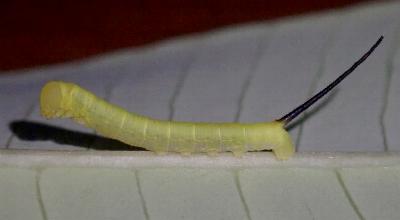
early instar, magnified
(Photo: courtesy of Dick Whitford, Mt Molloy, Queensland)

| (one synonym : Choerocampa hesperus Boisduval, 1875) MACROGLOSSINAE, SPHINGIDAE, BOMBYCOIDEA | (donherbisonevans@yahoo.com) and Stella Crossley |

early instar, magnified
(Photo: courtesy of Dick Whitford, Mt Molloy, Queensland)
The early instars Caterpillars of this species are green, and have a straight black spike on the last abdominal segment.
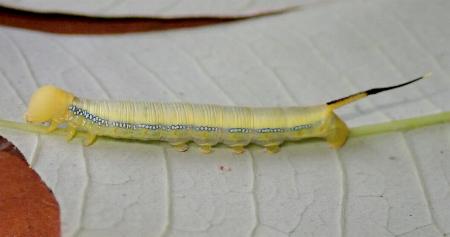
The middle instar caterpillars are decorated along each side with a spotty blue stripe below a broad vague yellow stripe.

The mature final instars have a strongly back-curving black-tipped yellowish horn, which is actually quite harmless.
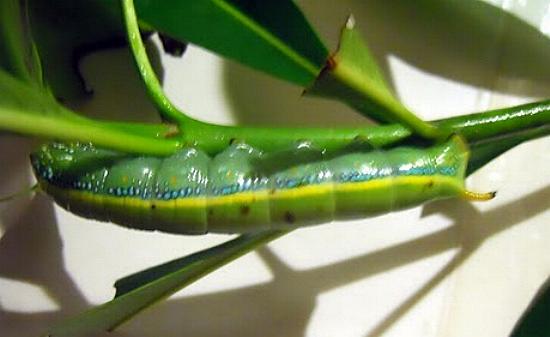
Mature caterpillars can be yellow, green or brown, but with the same spotty blue stripes now below a narrow orange or brown stripe.
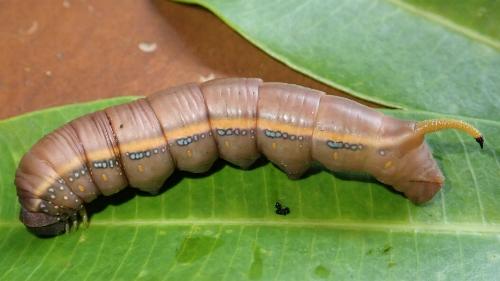
The caterpillars have been found feeding on various plants in APOCYNACEAE, including
as well as
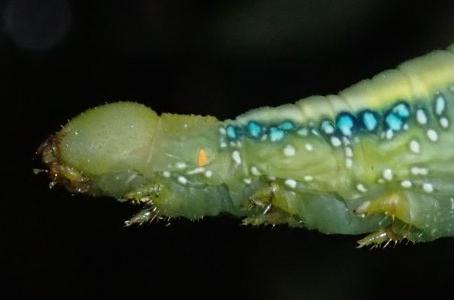
The caterpillar grows to a length of about 8 cms. It pupates in the ground litter in a flimsy cocoon covered in bits of dead leaf.
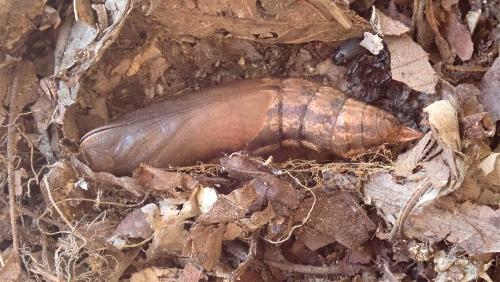
The pupa is brown, with a dark stripe running from back of the thorax over the head and developing haustellum, and along under the thorax. The pupa has a length of about 5 cms.
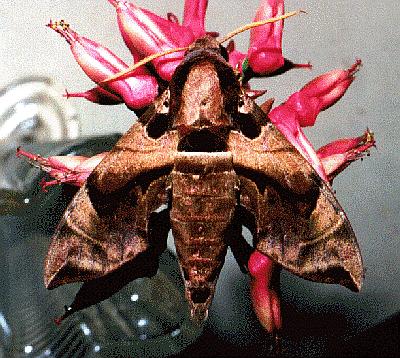
The adult moth has a complex pattern of light and dark brown on the wings, and a white-edged black bar across the first abdominal segment.
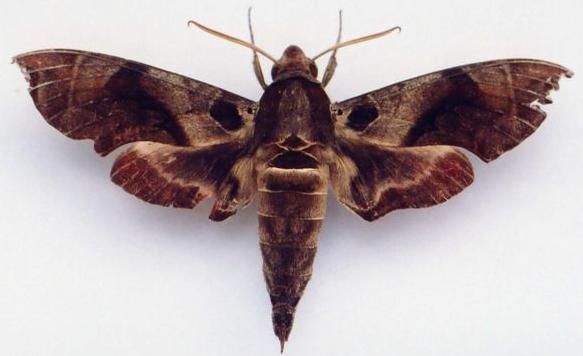
The adult differs from that of Daphnis moorei in having a relatively smaller dark basal area on each forewing The moth has a wingspan of about 7 cms.
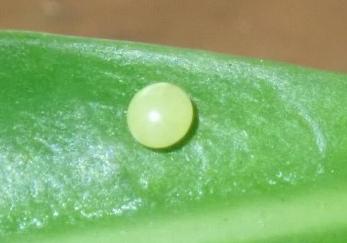
The eggs are oval with a length up to about 2 mms. They are initially white turning orange a hatching approaches. The eggs are usually laid singly on the underside of a leaf of a foodplant.
The species is found as several subspecies over south-east Asia, including :
and the subspecies placida in Australia in
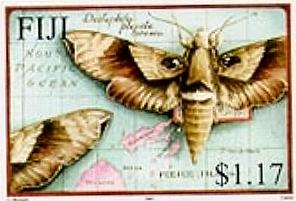
Further reading :
Ian F.B. Common,
Moths of Australia,
Melbourne University Press, 1990, pls. 16.2, 29.5, pp. 71, 412.
Peter Hendry,
The Hawk Moth Daphnis placida
(Lepidoptera: Sphingidae: Macroglossinae),
Butterflies and Other Invertebrates Club,
Metamorphosis Australia,
Issue 71 (December 2013), pp. 1, 4-5.
Maxwell S. Moulds, James P. Tuttle and David A. Lane.
Hawkmoths of Australia,
Monographs on Australian Lepidoptera Series, Volume 13 (2020),
pp. 112-115, Plates 22, 79, 86.
Buck Richardson,
Tropical Queensland Wildlife from Dusk to Dawn Science and Art,
LeapFrogOz, Kuranda, 2015, p. 197.
Francis Walker,
Catalogue of Lepidoptera Heterocera,
List of the Specimens of Lepidopterous Insects in the Collection of the British Museum,
Part 8 (1856), p. 186, No. 8.
 caterpillar |  butterflies |  Lepidoptera |  moths |  caterpillar |
(updated 8 April 2011, 14 October 2025)